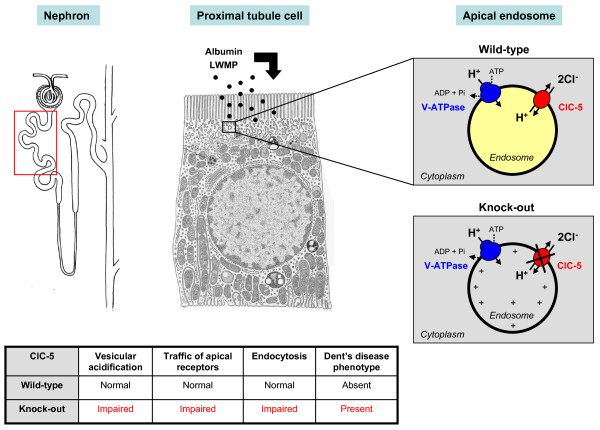Figure 1.
Role of ClC-5 and pathophysiology of Dent's disease. The epithelial cells lining the proximal tubule segments of the nephron (boxed area) are characterized by their capacity to reabsorb albumin and low-molecular-weight proteins (LMWP, black dots) that are ultrafiltered by the glomerulus. The intense endocytic activity in proximal tubule cells involves coated pits and coated vesicles, followed by early endosomes that form recycling endosomes or mature to late endosomes and lysosomes. Endosomal acidification (up to pH 5.0), that is necessary for dissociation of the ligand-receptor complex, recycling of receptors to the apical membrane, and progression of ligands into lysosomes, is achieved by ATP-driven transport of cytosolic H+ through the V-ATPase. In the apical endosomes, wild-type ClC-5 Cl-/H+ exchanger (upper panel) provides a countercurrent for the proton pump, which facilitates vesicular acidification. In ClC-5 knock-out endosomes (lower panel), the functional loss of ClC-5 impairs vesicular acidification by accumulating positive charges in the lumen. Defective endocytosis ensues, with a generalized dysfunction of proximal tubule cells and manifestations of renal Fanconi syndrome.

